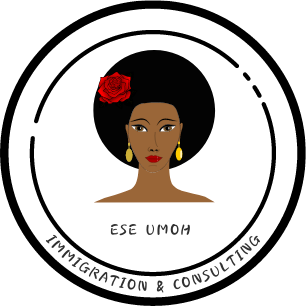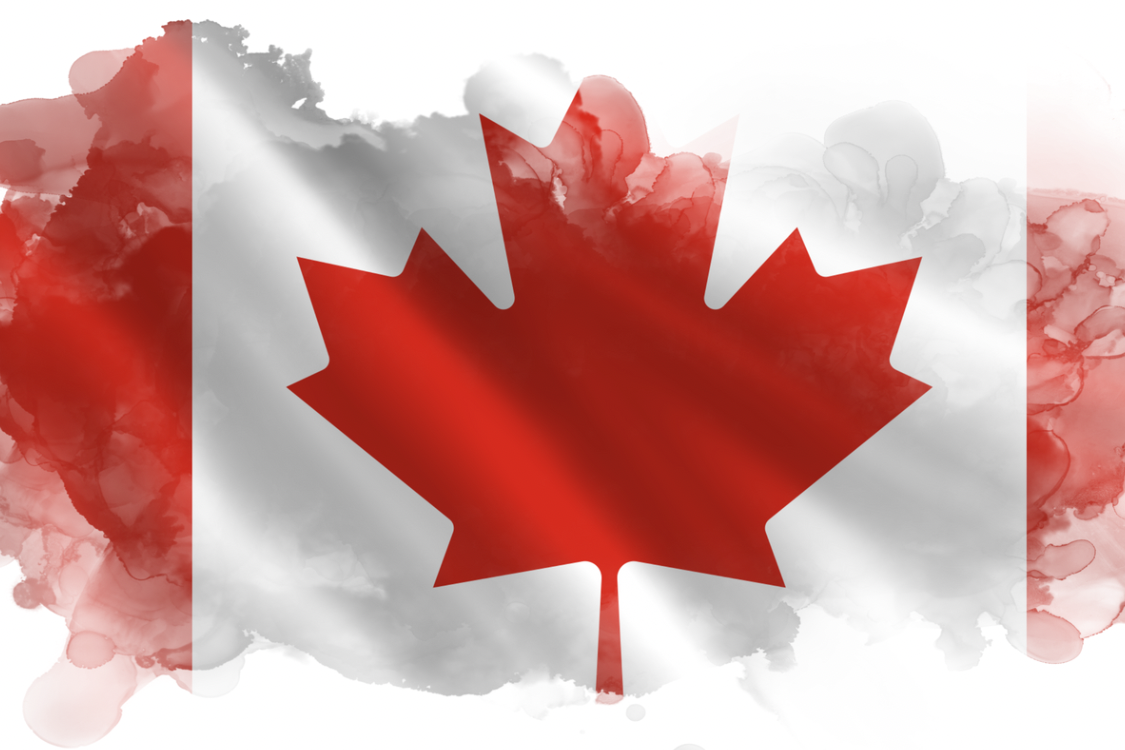Dear future neighbour,
Canada continues to welcome huge numbers of people who want to visit, study, or work and the interest just keeps growing. Whether you’re planning a vacation, thinking about studying in Canada, or exploring new career opportunities, it’s important to know what the current IRCC processing times look like so you can plan confidently.
And with Canada co-hosting the FIFA World Cup in 2026, things are about to get even busier. Millions of fans, workers, and international visitors are expected, which means application volumes are likely to spike as we get closer to the event. If Canada is on your radar for any reason either for travel, school, or work, it’s a smart idea to stay ahead of the rush.
Below, you’ll find the latest updated IRCC processing times for temporary visas. These will give you a clearer idea of what to expect and how soon you should start preparing.
Processing time for Visiting Visa as at December 3, 2025
| S/N | COUNTRY | PROCESSING TIME (VISITING VISA) |
| 1 | Afghanistan | 98 days |
| 2 | Albania | 49 days |
| 3 | Algeria | 41 days |
| 4 | Andorra | No processing time available |
| 5 | Angola | 99 days |
| 6 | Anguilla | No processing time available |
| 7 | Antigua and Barbuda | 34 days |
| 8 | Argentina | 21 days |
| 9 | Armenia | 16 days |
| 10 | Aruba | No processing time available |
| 11 | Australia | 10 days |
| 12 | Austria | 35 days |
| 13 | Azerbaijan | 25 days |
| 14 | Bahamas | 17 days |
| 15 | Bahrain | 41 days |
| 16 | Bangladesh | 24 days |
| 17 | Barbados | 124 days |
| 18 | Belarus | 18 days |
| 19 | Belgium | 102 days |
| 20 | Belize | 26 days |
| 21 | Benin | 718 days |
| 22 | Bermuda | 46 days |
| 23 | Bhutan | 21 days |
| 24 | Bolivia | 27 days |
| 25 | Bonaire | No processing time available |
| 26 | Bosnia and Herzegovina | 106 days |
| 27 | Botswana | 520 days |
| 28 | Brazil | 42 days |
| 29 | British Virgin Islands | No processing time available |
| 30 | Brunei | No processing time available |
| 31 | Bulgaria | 15 days |
| 32 | Burkina Faso | 97 days |
| 33 | Burma (Myanmar) | 21 days |
| 34 | Burundi | 207 days |
| 35 | Cambodia | 21 days |
| 36 | Cameroon | 439 days |
| 37 | Cabo Verde | No processing time available |
| 38 | Cayman Islands | 25 days |
| 39 | Central African Republic | 202 days |
| 40 | Chad | 508 days |
| 41 | Chile | 22 days |
| 42 | China (People’s Republic of) | 21 days |
| 43 | Colombia | 37 days |
| 44 | Comoros Island | No processing time available |
| 45 | Costa Rica | 21 days |
| 46 | Côte d’Ivoire | 452 days |
| 47 | Croatia | No processing time available |
| 48 | Cuba | 20 days |
| 49 | Cyprus | 44 days |
| 50 | Czech Republic | 36 days |
| 51 | Democratic Republic of Congo (Kinshasa) | 344 days |
| 52 | Denmark | 50 days |
| 53 | Djibouti | 98 days |
| 54 | Dominica | 47 days |
| 55 | Dominican Republic | 21 days |
| 56 | Ecuador | 27 days |
| 57 | Egypt | 86 days |
| 58 | El Salvador | 21 days |
| 59 | Equatorial Guinea | 403 days |
| 60 | Eritrea | 60 days |
| 61 | Estonia | 36 days |
| 62 | Eswatini | 554 days |
| 63 | Ethiopia | 71 days |
| 64 | Fiji | 9 days |
| 65 | Finland | 50 days |
| 66 | France | 99 days |
| 67 | Gabon | 100 days |
| 68 | Gambia | 605 days |
| 69 | Georgia | 18 days |
| 70 | Germany | 35 days |
| 71 | Ghana | 518 days |
| 72 | Greece | 43 days |
| 73 | Grenada | 23 days |
| 74 | Gautemala | 20 days |
| 75 | Guinea | 604 days |
| 76 | Guinea-Bissau | No processing time available |
| 77 | Guyana | 19 days |
| 78 | Haiti | 42 days |
| 79 | Holy See | No processing time available |
| 80 | Honduras | 21 days |
| 81 | Hong Kong SAR | 18 days |
| 82 | Hungary | 30 days |
| 83 | Iceland | No processing time available |
| 84 | India | 115 days |
| 85 | Indonesia | 20 days |
| 86 | Iran | 128 days |
| 87 | Iraq | 98 days |
| 88 | Ireland | 44 days |
| 89 | Israel | 28 days |
| 90 | Italy | 44 days |
| 91 | Jamaica | 22 days |
| 92 | Japan | 23 days |
| 93 | Jordan | 88 days |
| 94 | Kazakhstan | 20 days |
| 95 | Kenya | 76 days |
| 96 | Kiribati | No processing time available |
| 97 | Kosovo | 35 days |
| 98 | Kuwait | 45 days |
| 99 | Kyrgyzstan | 19 days |
| 100 | Laos | 23 days |
| 101 | Latvia | 34 days |
| 102 | Lebanon | 41 days |
| 103 | Lesotho | No processing time available |
| 104 | Liberia | 696 days |
| 105 | Libya | 97 days |
| 106 | Liechtenstein | No processing time available |
| 107 | Lithuania | 22 days |
| 108 | Luxembourg | 100 days |
| 109 | Macao SAR | 19 days |
| 110 | Macedonia | 200 days |
| 111 | Madagascar | 94 days |
| 112 | Malawi | 96 days |
| 113 | Malaysia | 30 days |
| 114 | Maldives | No processing time available |
| 115 | Mali | 551 days |
| 116 | Malta | 42 days |
| 117 | Marshall Islands | No processing time available |
| 118 | Martinique | No processing time available |
| 119 | Mauritania | 133 days |
| 120 | Mauritius | 76 days |
| 121 | Mexico | 43 days |
| 122 | Micronesia (Federated States of) | No processing time available |
| 123 | Moldova | 10 days |
| 124 | Monaco | No processing time available |
| 125 | Mongolia | 17 days |
| 126 | Montenegro | 91 days |
| 127 | Morocco | 51 days |
| 128 | Mozambique | 125 days |
| 129 | Namibia | 458 days |
| 130 | Nauru | No processing time available |
| 131 | Nepal | 19 days |
| 132 | Netherlands | 46 days |
| 133 | New Caledonia | No processing time available |
| 134 | New Zealand | 13 days |
| 135 | Nicaragua | 28 days |
| 136 | Niger | 455 days |
| 137 | Nigeria | 25 days |
| 138 | North Korea | No processing time available |
| 139 | Norway | 76 days |
| 140 | Oman | 41 days |
| 141 | Pakistan | 87 days |
| 142 | Palestinian Authority (Gaza) | 236 days |
| 143 | Palestinian Authority (West Bank) | 236 days |
| 144 | Panama | 29 days |
| 145 | Papua New Guinea | No processing time available |
| 146 | Paraguay | 21 days |
| 147 | Peru | 24 days |
| 148 | Philippines | 20 days |
| 149 | Poland | 17 days |
| 150 | Portugal | 97 days |
| 151 | Puerto Rico | No processing time available |
| 152 | Qatar | 61 days |
| 153 | Romania | 11 days |
| 154 | Republic of Congo (Brazzaville) | 102 days |
| 155 | Russia | 27 days |
| 156 | Rwanda | 189 days |
| 157 | Samoa | No processing time available |
| 158 | San Marino | No processing time available |
| 159 | Sao Tome and Principe | No processing time available |
| 160 | Saudi Arabia | 49 days |
| 161 | Senegal | 479 days |
| 162 | Serbia | 50 days |
| 163 | Seychelles | No processing time available |
| 164 | Sierra Leone | 589 days |
| 165 | Singapore | 27 days |
| 166 | Slovakia | No processing time available |
| 167 | Slovenia | No processing time available |
| 168 | Solomon Islands | No processing time available |
| 169 | Somalia | No processing time available |
| 170 | South Africa | 160 days |
| 171 | South Korea | 22 days |
| 172 | South Sudan | 64 days |
| 173 | Spain | 96 days |
| 174 | Sri Lanka | 65 days |
| 175 | St. Kitts and Nevis | No processing time available |
| 176 | St. Lucia | 41 days |
| 177 | St. Vincent and Grenadines | 32 days |
| 178 | Sudan | No processing time available |
| 179 | Suriname | No processing time available |
| 180 | Sweden | 47 days |
| 181 | Switzerland | 97 days |
| 182 | Syria | 71 days |
| 183 | Tahiti | No processing time available |
| 184 | Taiwan | 19 days |
| 185 | Tajikistan | 34 days |
| 186 | Tanzania | 162 days |
| 187 | Thailand | 27 days |
| 188 | Timor-Leste (Timor oriental) | No processing time available |
| 189 | Togo | 521 days |
| 190 | Tonga | No processing time available |
| 191 | Trinidad and Tobago | 25 days |
| 192 | Tunisia | 100 days |
| 193 | Turkiye | 19 days |
| 194 | Turkmenistan | 111 days |
| 195 | Turks and Caicos Islands | 43 days |
| 196 | Tuvalu | No processing time available |
| 197 | Uganda | 57 days |
| 198 | Ukraine | 43 days |
| 199 | United Arab Emirates | 71 days |
| 200 | United Kingdom | 49 days |
| 201 | United States of America | 32 days |
| 202 | Uruguay | 24 days |
| 203 | US Virgin Islands | No processing time available |
| 204 | Uzbekistan | 29 days |
| 205 | Vanuatu | No processing time available |
| 206 | Venezuela | 27 days |
| 207 | Vietnam | 35 days |
| 208 | Yemen | 219 days |
| 209 | Zambia | 99 days |
| 210 | Zimbabwe | 463 days |
Processing time for Work Permit as at December 3, 2025
| S/N | COUNTRY | PROCESSING TIME (WORK PERMIT) |
| 1 | Afghanistan | No processing time available |
| 2 | Albania | 14 weeks |
| 3 | Algeria | 16 weeks |
| 4 | Andorra | No processing time available |
| 5 | Angola | No processing time available |
| 6 | Anguilla | No processing time available |
| 7 | Antigua and Barbuda | No processing time available |
| 8 | Argentina | No processing time available |
| 9 | Armenia | No processing time available |
| 10 | Aruba | No processing time available |
| 11 | Australia | 6 weeks |
| 12 | Austria | No processing time available |
| 13 | Azerbaijan | No processing time available |
| 14 | Bahamas | No processing time available |
| 15 | Bahrain | No processing time available |
| 16 | Bangladesh | 12 weeks |
| 17 | Barbados | No processing time available |
| 18 | Belarus | No processing time available |
| 19 | Belgium | 6 weeks |
| 20 | Belize | No processing time available |
| 21 | Benin | No processing time available |
| 22 | Bermuda | No processing time available |
| 23 | Bhutan | No processing time available |
| 24 | Bolivia | No processing time available |
| 25 | Bonaire | No processing time available |
| 26 | Bosnia and Herzegovina | No processing time available |
| 27 | Botswana | No processing time available |
| 28 | Brazil | 7 weeks |
| 29 | British Virgin Islands | No processing time available |
| 30 | Brunei | No processing time available |
| 31 | Bulgaria | No processing time available |
| 32 | Burkina Faso | 9 weeks |
| 33 | Burma (Myanmar) | No processing time available |
| 34 | Burundi | No processing time available |
| 35 | Cambodia | No processing time available |
| 36 | Cameroon | 8 weeks |
| 37 | Cabo Verde | No processing time available |
| 38 | Cayman Islands | No processing time available |
| 39 | Central African Republic | No processing time available |
| 40 | Chad | No processing time available |
| 41 | Chile | 5 weeks |
| 42 | China (People’s Republic of) | 7 weeks |
| 43 | Colombia | 6 weeks |
| 44 | Comoros Island | No processing time available |
| 45 | Costa Rica | No processing time available |
| 46 | Côte d’Ivoire | 10 weeks |
| 47 | Croatia | No processing time available |
| 48 | Cuba | No processing time available |
| 49 | Cyprus | No processing time available |
| 50 | Czech Republic | No processing time available |
| 51 | Democratic Republic of Congo (Kinshasa) | 9 weeks |
| 52 | Denmark | No processing time available |
| 53 | Djibouti | No processing time available |
| 54 | Dominica | No processing time available |
| 55 | Dominican Republic | No processing time available |
| 56 | Ecuador | 13 weeks |
| 57 | Egypt | No processing time available |
| 58 | El Salvador | No processing time available |
| 59 | Equatorial Guinea | No processing time available |
| 60 | Eritrea | No processing time available |
| 61 | Estonia | No processing time available |
| 62 | Eswatini | No processing time available |
| 63 | Ethiopia | No processing time available |
| 64 | Fiji | No processing time available |
| 65 | Finland | No processing time available |
| 66 | France | 3 weeks |
| 67 | Gabon | No processing time available |
| 68 | Gambia | No processing time available |
| 69 | Georgia | No processing time available |
| 70 | Germany | 11 weeks |
| 71 | Ghana | 15 weeks |
| 72 | Greece | No processing time available |
| 73 | Grenada | No processing time available |
| 74 | Gautemala | 2 weeks |
| 75 | Guinea | No processing time available |
| 76 | Guinea-Bissau | No processing time available |
| 77 | Guyana | No processing time available |
| 78 | Haiti | 6 weeks |
| 79 | Holy See | No processing time available |
| 80 | Honduras | 3 weeks |
| 81 | Hong Kong SAR | 36 weeks |
| 82 | Hungary | No processing time available |
| 83 | Iceland | No processing time available |
| 84 | India | 10 weeks |
| 85 | Indonesia | 4 weeks |
| 86 | Iran | 49 weeks |
| 87 | Iraq | 69 weeks |
| 88 | Ireland | No processing time available |
| 89 | Israel | 10 weeks |
| 90 | Italy | 12 weeks |
| 91 | Jamaica | 6 weeks |
| 92 | Japan | 4 weeks |
| 93 | Jordan | No processing time available |
| 94 | Kazakhstan | No processing time available |
| 95 | Kenya | 11 weeks |
| 96 | Kiribati | No processing time available |
| 97 | Kosovo | No processing time available |
| 98 | Kuwait | 18 weeks |
| 99 | Kyrgyzstan | No processing time available |
| 100 | Laos | No processing time available |
| 101 | Latvia | No processing time available |
| 102 | Lebanon | 9 weeks |
| 103 | Lesotho | No processing time available |
| 104 | Liberia | No processing time available |
| 105 | Libya | No processing time available |
| 106 | Liechtenstein | No processing time available |
| 107 | Lithuania | No processing time available |
| 108 | Luxembourg | No processing time available |
| 109 | Macao SAR | No processing time available |
| 110 | Macedonia | No processing time available |
| 111 | Madagascar | 23 weeks |
| 112 | Malawi | No processing time available |
| 113 | Malaysia | No processing time available |
| 114 | Maldives | No processing time available |
| 115 | Mali | No processing time available |
| 116 | Malta | No processing time available |
| 117 | Marshall Islands | No processing time available |
| 118 | Martinique | No processing time available |
| 119 | Mauritania | No processing time available |
| 120 | Mauritius | 29 weeks |
| 121 | Mexico | 2 weeks |
| 122 | Micronesia (Federated States of) | No processing time available |
| 123 | Moldova | No processing time available |
| 124 | Monaco | No processing time available |
| 125 | Mongolia | No processing time available |
| 126 | Montenegro | No processing time available |
| 127 | Morocco | 11 weeks |
| 128 | Mozambique | No processing time available |
| 129 | Namibia | No processing time available |
| 130 | Nauru | No processing time available |
| 131 | Nepal | 4 weeks |
| 132 | Netherlands | No processing time available |
| 133 | New Caledonia | No processing time available |
| 134 | New Zealand | No processing time available |
| 135 | Nicaragua | 2 weeks |
| 136 | Niger | No processing time available |
| 137 | Nigeria | 7 weeks |
| 138 | North Korea | No processing time available |
| 139 | Norway | No processing time available |
| 140 | Oman | No processing time available |
| 141 | Pakistan | 7 weeks |
| 142 | Palestinian Authority (Gaza) | No processing time available |
| 143 | Palestinian Authority (West Bank) | No processing time available |
| 144 | Panama | No processing time available |
| 145 | Papua New Guinea | No processing time available |
| 146 | Paraguay | No processing time available |
| 147 | Peru | 5 weeks |
| 148 | Philippines | 6 weeks |
| 149 | Poland | No processing time available |
| 150 | Portugal | No processing time available |
| 151 | Puerto Rico | No processing time available |
| 152 | Qatar | 21 weeks |
| 153 | Romania | 31 weeks |
| 154 | Republic of Congo (Brazzaville) | No processing time available |
| 155 | Russia | No processing time available |
| 156 | Rwanda | No processing time available |
| 157 | Samoa | No processing time available |
| 158 | San Marino | No processing time available |
| 159 | Sao Tome and Principe | No processing time available |
| 160 | Saudi Arabia | 5 weeks |
| 161 | Senegal | 9 weeks |
| 162 | Serbia | No processing time available |
| 163 | Seychelles | No processing time available |
| 164 | Sierra Leone | No processing time available |
| 165 | Singapore | 10 weeks |
| 166 | Slovakia | No processing time available |
| 167 | Slovenia | No processing time available |
| 168 | Solomon Islanda | No processing time available |
| 169 | Somalia | No processing time available |
| 170 | South Africa | 15 weeks |
| 171 | South Korea | 15 weeks |
| 172 | South Sudan | No processing time available |
| 173 | Spain | 10 weeks |
| 174 | Sri Lanka | 7 weeks |
| 175 | St. Kitts and Nevis | No processing time available |
| 176 | St. Lucia | No processing time available |
| 177 | St. Vincent and Grenadines | No processing time available |
| 178 | Sudan | No processing time available |
| 179 | Suriname | No processing time available |
| 180 | Sweden | No processing time available |
| 181 | Switzerland | No processing time available |
| 182 | Syria | No processing time available |
| 183 | Tahiti | No processing time available |
| 184 | Taiwan | 6 weeks |
| 185 | Tajikistan | No processing time available |
| 186 | Tanzania | No processing time available |
| 187 | Thailand | 5 weeks |
| 188 | Timor-Leste (Timor oriental) | No processing time available |
| 189 | Togo | 17 weeks |
| 190 | Tonga | No processing time available |
| 191 | Trinidad and Tobago | No processing time available |
| 192 | Tunisia | 10 weeks |
| 193 | Turkiye | 6 weeks |
| 194 | Turkmenistan | No processing time available |
| 195 | Turks and Caicos Islands | No processing time available |
| 196 | Tuvalu | No processing time available |
| 197 | Uganda | No processing time available |
| 198 | Ukraine | No processing time available |
| 199 | United Arab Emirates | 19 weeks |
| 200 | United Kingdom | 4 weeks |
| 201 | United States of America | 7 weeks |
| 202 | Uruguay | No processing time available |
| 203 | US Virgin Islands | No processing time available |
| 204 | Uzbekistan | No processing time available |
| 205 | Vanuatu | No processing time available |
| 206 | Venezuela | No processing time available |
| 207 | Vietnam | 8 weeks |
| 208 | Yemen | No processing time available |
| 209 | Zambia | No processing time available |
| 210 | Zimbabwe | No processing time available |
Processing time for Study Permit as at December 3, 2025
| S/N | COUNTRY | PROCESSING TIME (STUDY PERMIT) |
| 1 | Afghanistan | No processing time available |
| 2 | Albania | No processing time available |
| 3 | Algeria | 4 weeks |
| 4 | Andorra | No processing time available |
| 5 | Angola | No processing time available |
| 6 | Anguilla | No processing time available |
| 7 | Antigua and Barbuda | No processing time available |
| 8 | Argentina | No processing time available |
| 9 | Armenia | No processing time available |
| 10 | Aruba | No processing time available |
| 11 | Australia | 3 weeks |
| 12 | Austria | No processing time available |
| 13 | Azerbaijan | 4 weeks |
| 14 | Bahamas | 11 weeks |
| 15 | Bahrain | No processing time available |
| 16 | Bangladesh | 4 weeks |
| 17 | Barbados | 11 weeks |
| 18 | Belarus | No processing time available |
| 19 | Belgium | 12 weeks |
| 20 | Belize | No processing time available |
| 21 | Benin | 16 weeks |
| 22 | Bermuda | No processing time available |
| 23 | Bhutan | No processing time available |
| 24 | Bolivia | No processing time available |
| 25 | Bonaire | No processing time available |
| 26 | Bosnia and Herzegovina | No processing time available |
| 27 | Botswana | No processing time available |
| 28 | Brazil | 5 weeks |
| 29 | British Virgin Islands | No processing time available |
| 30 | Brunei | No processing time available |
| 31 | Bulgaria | No processing time available |
| 32 | Burkina Faso | 3 weeks |
| 33 | Burma (Myanmar) | 4 weeks |
| 34 | Burundi | 16 weeks |
| 35 | Cambodia | 5 weeks |
| 36 | Cameroon | 8 weeks |
| 37 | Cabo Verde | No processing time available |
| 38 | Cayman Islands | No processing time available |
| 39 | Central African Republic | No processing time available |
| 40 | Chad | 8 weeks |
| 41 | Chile | 11 weeks |
| 42 | China (People’s Republic of) | 5 weeks |
| 43 | Colombia | 5 weeks |
| 44 | Comoros Island | No processing time available |
| 45 | Costa Rica | No processing time available |
| 46 | Côte d’Ivoire | 10 weeks |
| 47 | Croatia | No processing time available |
| 48 | Cuba | No processing time available |
| 49 | Cyprus | No processing time available |
| 50 | Czech Republic | 12 weeks |
| 51 | Democratic Republic of Congo (Kinshasa) | 5 weeks |
| 52 | Denmark | 13 weeks |
| 53 | Djibouti | No processing time available |
| 54 | Dominica | No processing time available |
| 55 | Dominican Republic | 4 weeks |
| 56 | Ecuador | 7 weeks |
| 57 | Egypt | 9 weeks |
| 58 | El Salvador | No processing time available |
| 59 | Equatorial Guinea | No processing time available |
| 60 | Eritrea | No processing time available |
| 61 | Estonia | No processing time available |
| 62 | Eswatini | No processing time available |
| 63 | Ethiopia | 9 weeks |
| 64 | Fiji | No processing time available |
| 65 | Finland | No processing time available |
| 66 | France | 2 weeks |
| 67 | Gabon | No processing time available |
| 68 | Gambia | 11 weeks |
| 69 | Georgia | No processing time available |
| 70 | Germany | 3 weeks |
| 71 | Ghana | 17 weeks |
| 72 | Greece | No processing time available |
| 73 | Grenada | No processing time available |
| 74 | Gautemala | No processing time available |
| 75 | Guinea | 8 weeks |
| 76 | Guinea-Bissau | No processing time available |
| 77 | Guyana | No processing time available |
| 78 | Haiti | 4 weeks |
| 79 | Holy See | No processing time available |
| 80 | Honduras | No processing time available |
| 81 | Hong Kong SAR | 12 weeks |
| 82 | Hungary | No processing time available |
| 83 | Iceland | No processing time available |
| 84 | India | 3 weeks |
| 85 | Indonesia | 4 weeks |
| 86 | Iran | 42 weeks |
| 87 | Iraq | No processing time available |
| 88 | Ireland | 12 weeks |
| 89 | Israel | No processing time available |
| 90 | Italy | 12 weeks |
| 91 | Jamaica | 4 weeks |
| 92 | Japan | 2 weeks |
| 93 | Jordan | 7 weeks |
| 94 | Kazakhstan | 9 weeks |
| 95 | Kenya | 10 weeks |
| 96 | Kiribati | No processing time available |
| 97 | Kosovo | No processing time available |
| 98 | Kuwait | 5 weeks |
| 99 | Kyrgyzstan | No processing time available |
| 100 | Laos | No processing time available |
| 101 | Latvia | No processing time available |
| 102 | Lebanon | 9 weeks |
| 103 | Lesotho | No processing time available |
| 104 | Liberia | 12 weeks |
| 105 | Libya | 9 weeks |
| 106 | Liechtenstein | No processing time available |
| 107 | Lithuania | No processing time available |
| 108 | Luxembourg | No processing time available |
| 109 | Macao SAR | No processing time available |
| 110 | Macedonia | No processing time available |
| 111 | Madagascar | 20 weeks |
| 112 | Malawi | No processing time available |
| 113 | Malaysia | 9 weeks |
| 114 | Maldives | No processing time available |
| 115 | Mali | 10 weeks |
| 116 | Malta | No processing time available |
| 117 | Marshall Islands | No processing time available |
| 118 | Martinique | No processing time available |
| 119 | Mauritania | No processing time available |
| 120 | Mauritius | 13 weeks |
| 121 | Mexico | 5 weeks |
| 122 | Micronesia (Federated States of) | No processing time available |
| 123 | Moldova | No processing time available |
| 124 | Monaco | No processing time available |
| 125 | Mongolia | 4 weeks |
| 126 | Montenegro | No processing time available |
| 127 | Morocco | 8 weeks |
| 128 | Mozambique | No processing time available |
| 129 | Namibia | No processing time available |
| 130 | Nauru | No processing time available |
| 131 | Nepal | 3 weeks |
| 132 | Netherlands | 12 weeks |
| 133 | New Caledonia | No processing time available |
| 134 | New Zealand | No processing time available |
| 135 | Nicaragua | No processing time available |
| 136 | Niger | 7 weeks |
| 137 | Nigeria | 5 weeks |
| 138 | North Korea | No processing time available |
| 139 | Norway | No processing time available |
| 140 | Oman | 3 weeks |
| 141 | Pakistan | 5 weeks |
| 142 | Palestinian Authority (Gaza) | No processing time available |
| 143 | Palestinian Authority (West Bank) | No processing time available |
| 144 | Panama | No processing time available |
| 145 | Papua New Guinea | No processing time available |
| 146 | Paraguay | No processing time available |
| 147 | Peru | 4 weeks |
| 148 | Philippines | 4 weeks |
| 149 | Poland | 7 weeks |
| 150 | Portugal | No processing time available |
| 151 | Puerto Rico | No processing time available |
| 152 | Qatar | 3 weeks |
| 153 | Romania | No processing time available |
| 154 | Republic of Congo (Brazzaville) | 3 weeks |
| 155 | Russia | 7 weeks |
| 156 | Rwanda | 13 weeks |
| 157 | Samoa | No processing time available |
| 158 | San Marino | No processing time available |
| 159 | Sao Tome and Principe | No processing time available |
| 160 | Saudi Arabia | 4 weeks |
| 161 | Senegal | 7 weeks |
| 162 | Serbia | No processing time available |
| 163 | Seychelles | No processing time available |
| 164 | Sierra Leone | No processing time available |
| 165 | Singapore | 9 weeks |
| 166 | Slovakia | 13 weeks |
| 167 | Slovenia | No processing time available |
| 168 | Solomon Islands | No processing time available |
| 169 | Somalia | No processing time available |
| 170 | South Africa | 18 weeks |
| 171 | South Korea | 2 weeks |
| 172 | South Sudan | No processing time available |
| 173 | Spain | 12 weeks |
| 174 | Sri Lanka | 8 weeks |
| 175 | St. Kitts and Nevis | No processing time available |
| 176 | St. Lucia | No processing time available |
| 177 | St. Vincent and Grenadines | No processing time available |
| 178 | Sudan | No processing time available |
| 179 | Suriname | No processing time available |
| 180 | Sweden | No processing time available |
| 181 | Switzerland | 12 weeks |
| 182 | Syria | No processing time available |
| 183 | Tahiti | No processing time available |
| 184 | Taiwan | 3 weeks |
| 185 | Tajikistan | No processing time available |
| 186 | Tanzania | 12 weeks |
| 187 | Thailand | 4 weeks |
| 188 | Timor-Leste (Timor oriental) | No processing time available |
| 189 | Togo | 12 weeks |
| 190 | Tonga | No processing time available |
| 191 | Trinidad and Tobago | 6 weeks |
| 192 | Tunisia | 4 weeks |
| 193 | Turkiye | 4 weeks |
| 194 | Turkmenistan | No processing time available |
| 195 | Turks and Caicos Islands | No processing time available |
| 196 | Tuvalu | No processing time available |
| 197 | Uganda | 5 weeks |
| 198 | Ukraine | No processing time available |
| 199 | United Arab Emirates | 6 weeks |
| 200 | United Kingdom | 5 weeks |
| 201 | United States of America | 4 weeks |
| 202 | Uruguay | No processing time available |
| 203 | US Virgin Islands | No processing time available |
| 204 | Uzbekistan | 6 weeks |
| 205 | Vanuatu | No processing time available |
| 206 | Venezuela | No processing time available |
| 207 | Vietnam | 6 weeks |
| 208 | Yemen | No processing time available |
| 209 | Zambia | No processing time available |
| 210 | Zimbabwe | 17 weeks |
If you’re thinking about coming to Canada especially with the excitement of FIFA 2026 coming up, now is the perfect time to get started. Need help making sense of the timelines or putting together a strong application? We are here to guide you every step of the way. Let’s get your plans moving! Book a 60 minute or 30-minute consultation today!














